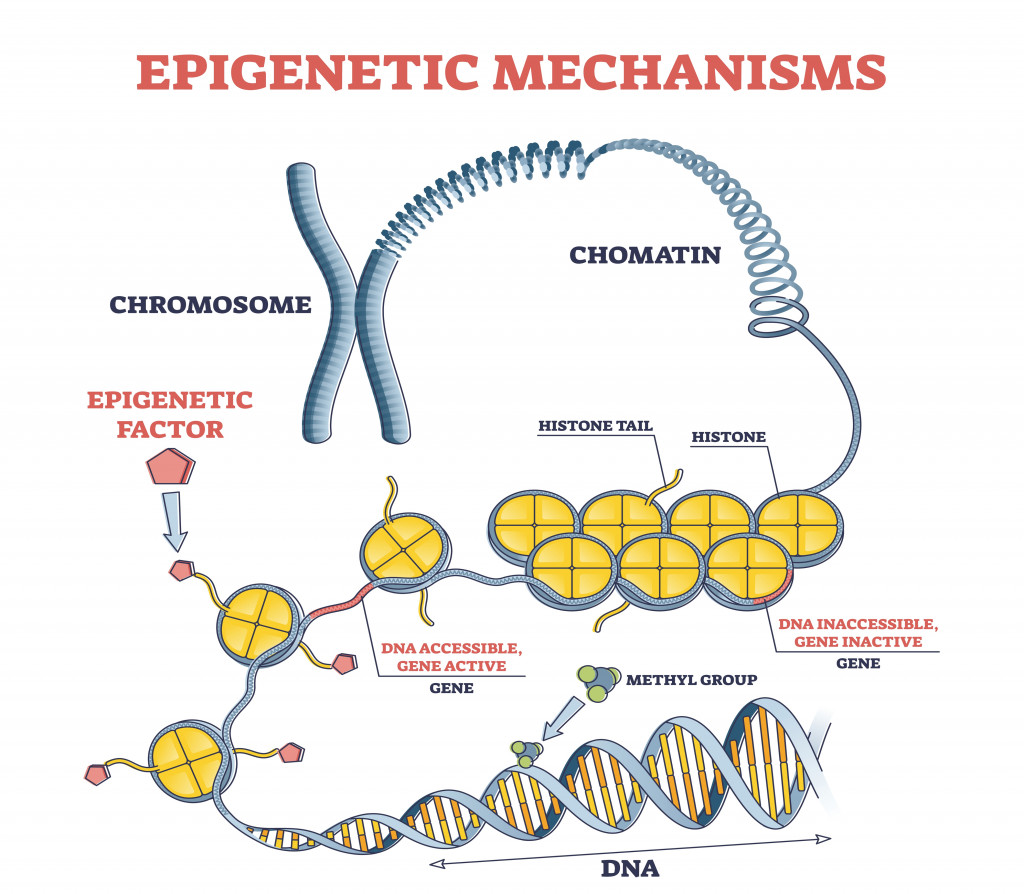Table of Contents (click to expand)
No, it isn’t all driven by nature. Though your genetic makeup does affect your behavior, your environment also plays a big role. The environment can dictate how your genes work in the body. This study is called epigenetics, and scientists are using it to discover how our environment shapes our behavior.
Let’s talk about twins. More specifically, let’s talk about identical twins.
Identical twins arise from a single fertilized egg that splits in two, which is why they are sometimes referred to as monozygotic twins, and it’s also why identical twins share the same genomes and are always of the same sex. In terms of genetic identity, identical twins are as close as it gets. However, the question does arise, does a genetic similarity denote similar development or decision-making?
Let’s consider two cases of identical twins.
First, we have the “two Jims” situation. Two identical twins were separated a month after their birth and then reunited in the 39th year of their life. James Springer and James Lewis both grew up in different environments, but surprisingly enough, they led surprisingly similar lives!
They both loved math and hated English (more specifically, spelling). They both even got the same types of headaches at the same times of the day!

Now, let’s check out our second example: the example of the Oliver sisters. The Oliver sisters are, again, a pair of identical twins.
Barbara Oliver and her sister, Christine Oliver, were born and raised as pretty much the same person. They wore matching clothes and were even treated to the same types of haircuts. However, when they reached adolescence, their paths diverged.
Barbara was the bolder of the two, while Christine was the more conscientious one. In her own words, Barbara described the differences between her and her sister in the following way:
“I wore short skirts. Christine had longer dresses and jackets. Christine is more conscientious about what she does. I am more confident. That became increasingly obvious as the years went by.”
Barbara and Christine shared identical genes and identical settings for growth, yet they grew up to become increasingly different from one another.
Conversely, Jim Springer and Jim Lewis grew up in different conditions, but grew up to be almost eerily alike.
The only thing common to the examples of both sets of twins was their genes. Each set of twins (the twin brothers and the twin sisters, respectively) had identical genomes. However, what did differ between the two examples was their environment. The brothers were raised separately, whereas the sisters were raised together. So, to answer any questions that arise, we need to consider genes with respect to external environments.
This interplay, between how genes and traits are inherited, while also considering the external environment, is known as epigenetics. We can use epigenetics to try and answer questions related to our genes and try to determine how much they influence our decisions and actions.
What Is Epigenetics?
Professor Tim Spector, who heads the twin studies research wing of King’s College, London, had the following to say about epigenetics,
“Essentially, epigenetics is the mechanism by which environmental changes alter the behavior of our genes.”

More specifically, epigenetics refers to the field of study that focuses on how variations in genes can stem from means other than variations in DNA. When we talk about variations in DNA, we usually talk about variations caused by random mutations or genetic recombinations.
However, epigenetics refers to variations in DNA caused by our external environment.
Also Read: What Is Epigenetic Inheritance?
How Does The External Environment Cause DNA Variation?
It all comes down to a process known as methylation.
In animal cells, genes are usually organized into chromosomes we can find in the nucleus. Let’s visualize this gene as a vertical block present in the nucleus of a cell.
There are many chemicals and compounds that float around our cells. One of these chemicals is a methyl (CH3-) group. These methyl groups sometimes interact with the genes in our cells. They do this by effectively fixing themselves to the gene. Imagine the methyl group as a cap that can be placed on the vertical block of the cell.
Once fixed atop the gene, this methyl group can now inhibit the activity of that gene, in reaction to certain external conditions. Essentially, it can control gene behavior.

For example, DNA methylation is higher in certain genes for non-smokers than for smokers. In fact, when smokers quit, it has been observed that their DNA methylation activity also increases. Cigarette smoke releases toxic chemicals, such as hydrogen cyanide, carbon monoxide, and ammonia. When you quit, these chemicals are no longer emitted, and they don’t surround the environment around you. This switch from smoking to non-smoking isn’t just a behavioral change, but an environmental shift. The lack of those chemicals changes the methylation profile of smokers.
Also Read: Are We Born With A Fixed Personality Or Can It Be Manipulated By Our Environment?
How Can Epigenetics Account For Behavior And Choice?
Professor Spector and his team at the Twin Research Wing used epigenetics to try and explain behavioral changes between sets of twins.
Think of it like this. When a methyl group fixes itself atop a gene, it effectively acts as a switch. When a gene is “switched off” due to methylation, it affects gene expression, but when a gene is “switched on”, it goes back to normal business, without additional changes in gene expression. This all comes down to methylation. When methylation levels differ between twins, a twin may be “switched on” for a particular trait, while the other twin might be “switched off” for that same gene.
This genetic expression goes beyond just behavioral changes. Spector found several correlations between a disposition to diseases like cancer or diabetes and even mental disorders like depression or anxiety. In Spector’s own words, he explained his conclusions as follows:
“We have studied identical twins who have different tolerances to pain and shown that they have different states of methylation. We have also produced similar results for depression, diabetes and breast cancer. In each case, we have found genes that are switched on in one twin and switched off in the other twin. This often determines whether or not they are likely to get a disease.”
So, while genes do determine our behaviors to a large extent, our environments can also have an affect on how these genes express themselves, which in turn affects our behavior!
How well do you understand the article above!

References (click to expand)
- Pang, Y.-Y., Lu, R. J.-H., & Chen, P.-Y. (2019, August 23). Behavioral Epigenetics: Perspectives Based on Experience-Dependent Epigenetic Inheritance. Epigenomes. MDPI AG.
- What is Epigenetics? The Answer to the Nature vs. Nurture .... Harvard University
- Powledge, T. M. (2011, August). Behavioral Epigenetics: How Nurture Shapes Nature. BioScience. Oxford University Press (OUP).
- Is Human Behavior Genetic or Learned? | National University. National University
- Do your genes determine your entire life? - The Guardian. The Guardian
- Robinson, G. E., Fernald, R. D., & Clayton, D. F. (2008, November 7). Genes and Social Behavior. Science. American Association for the Advancement of Science (AAAS).
- Campos, A. I., Mitchell, B. L., & Rentería, M. E. (2019, April 24). Twins Can Help Us Understand How Genes and the Environment Shape Us. Frontiers for Young Minds. Frontiers Media SA.
